Christopher M Spence
age ~42
from Hemet, CA
- Also known as:
-
- Chris M Spence
- Christopher M Spencer
- Christopher Stence
Christopher Spence Phones & Addresses
- Hemet, CA
- 114 Anchor Ct, San Jacinto, CA 92583
- Smithtown, NY
- Tulsa, OK
- San Ramon, CA
- Riverside, CA
- 15 Albatross Ln, Smithtown, NY 11787
Isbn (Books And Publications)

Medicine Doctors

Christopher R. Spence
view sourceSpecialties:
General Surgery
Work:
Steelhead Surgery
2801 NW Mercy Dr STE 330, Roseburg, OR 97471
(541)6773600 (phone), (541)6773601 (fax)
2801 NW Mercy Dr STE 330, Roseburg, OR 97471
(541)6773600 (phone), (541)6773601 (fax)
Education:
Medical School
Thomas Jefferson University, Jefferson Medical College
Graduated: 1996
Thomas Jefferson University, Jefferson Medical College
Graduated: 1996
Procedures:
Endoscopic Retrograde Cholangiopancreatography (ERCP)
Hernia Repair
Laparoscopic Gallbladder Removal
Small Bowel Resection
Thoracoscopy
Appendectomy
Colonoscopy
Gallbladder Removal
Hemorrhoid Procedures
Laparoscopic Appendectomy
Mastectomy
Proctosigmoidoscopy
Upper Gastrointestinal Endoscopy
Hernia Repair
Laparoscopic Gallbladder Removal
Small Bowel Resection
Thoracoscopy
Appendectomy
Colonoscopy
Gallbladder Removal
Hemorrhoid Procedures
Laparoscopic Appendectomy
Mastectomy
Proctosigmoidoscopy
Upper Gastrointestinal Endoscopy
Conditions:
Abdominal Hernia
Appendicitis
Benign Neoplasm of Breast
Breast Disorders
Breast Neoplasm, Malignant
Appendicitis
Benign Neoplasm of Breast
Breast Disorders
Breast Neoplasm, Malignant
Languages:
English
Description:
Dr. Spence graduated from the Thomas Jefferson University, Jefferson Medical College in 1996. He works in Roseburg, OR and specializes in General Surgery. Dr. Spence is affiliated with Mercy Medical Center.
Name / Title
Company / Classification
Phones & Addresses
THE NEW GROWTH GROUP, LLC
SPENCE PROPERTY MANAGEMENT, LLC
DTR 2, LLC
General Manager
L. I. Child and Family Development Services, Inc
Child Day Care Services · Child Day Care Services Child Day Care Services
Child Day Care Services · Child Day Care Services Child Day Care Services
48 Cedar Rd, Amityville, NY 11701
(631)8428484
(631)8428484
Us Patents
-
Piezo Programmable Reticle For Euv Lithography
view source -
US Patent:6356340, Mar 12, 2002
-
Filed:Nov 20, 1998
-
Appl. No.:09/197020
-
Inventors:Christopher A. Spence - Sunnyvale CA
-
Assignee:Advanced Micro Devices, Inc. - Sunnyvale CA
-
International Classification:G03B 2742
-
US Classification:355 53, 430 5
-
Abstract:A programmable reticle has a plurality of addressable pixels. Each of the pixels has one or more elastic elements which underlie a reflective surface, the elements each being activatable for selectively deforming part of the reflective surface. The amount of deformation is such that light reflected from a deformed part destructively interferes with light reflected from the vicinity of the deformed part. The programmable reticle may be used as a part of a scanning lithography system wherein a wafer or other device to be exposed is moved to expose different of its areas, while the pattern on the programmable reticle is changed to reflect the desired exposure pattern of the area of the wafer currently being exposed. In such a scanning system, any given point on the wafer will be exposed using a number of different pixels on the reticle; therefore the effect of a defective pixel will be âdilutedâ or âvoted outâ by the other, non-defective pixels also involved in exposing that spot.
-
Simultaneous Heating And Exposure Of Reticle With Pattern Placement Correction
view source -
US Patent:6437348, Aug 20, 2002
-
Filed:Oct 21, 1999
-
Appl. No.:09/422310
-
Inventors:Christopher F. Spence - Sunnyvale CA
-
Assignee:Advanced Micro Devices, Inc. - Sunnyvale CA
-
International Classification:A61N 500
-
US Classification:2504912, 2504921
-
Abstract:A device for exposing and heating a substrate coated with resist includes an exposure tool for selectively exposing the resist, and a heater for heating the exposed resist, the exposure tool and the heater able to simultaneously act on different portions of the resist. A method of patterning resist on a substrate includes the steps of selectively exposing the resist on the first portion of the substrate, heating the resist on the first portion, and simultaneously or thereafter selectively exposing the resist on a second portion of the substrate. In an exemplary embodiment the exposure tool is an electron beam generator for exposing a chemically-amplified resist, and the heater is a light source such as a laser light source which does not appreciably expose the resist. The device and method allow a post-exposure heating with a smaller delay between the exposure and the heating than with conventional methods, which involve exposing a reticle and mask completely before heating by baking.
-
Characterization And Synthesis Of Opc Structures By Fourier Space Analysis And/Or Wavelet Transform Expansion
view source -
US Patent:6492066, Dec 10, 2002
-
Filed:May 28, 1999
-
Appl. No.:09/321089
-
Inventors:Luigi Capodieci - Sunnyvale CA
Christopher A. Spence - Sunnyvale CA -
Assignee:Advanced Micro Devices, Inc. - Sunnyvale CA
-
International Classification:G03F 900
-
US Classification:430 5, 716 21
-
Abstract:A method ( ) of characterizing optical proximity correction designs includes performing a mathematical transform ( ) on a first feature ( ) and a second feature ( ) each having a core portion ( ) and a first OPC design and a second OPC design applied thereto, respectively. The method ( ) further includes obtaining a metric (162) for the transformed first and second features, wherein the metric is based upon a capability of a pattern transfer system which will utilize masks employing the first and second features ( ) as a patterns thereon. One of the first feature or the second feature is then selected ( ) based upon an application of the metric to the first and second transformed features ( ), thereby selecting the one of the first feature or the second feature which provides for a better pattern transfer performance.
-
Semiconductor Manufacturing Resolution Enhancement System And Method For Simultaneously Patterning Different Feature Types
view source -
US Patent:6994939, Feb 7, 2006
-
Filed:Oct 29, 2002
-
Appl. No.:10/283685
-
Inventors:Kouros Ghandehari - Santa Clara CA, US
Jean Y. Yang - Sunnyvale CA, US
Christopher A. Spence - Sunnyvale CA, US -
Assignee:Advanced Micro Devices, Inc. - Sunnyvale CA
-
International Classification:G03F 9/00
-
US Classification:430 5, 430311, 430312, 430320, 430321, 430322, 430323, 430324
-
Abstract:A method and system of making a mask with a transparent substrate thereon is provided. A first resolution enhancement structure is formed on the first portion of the transparent substrate. A second resolution enhancement structure is formed on a second portion of the transparent substrate, with the second resolution enhancement structure different from the first resolution enhancement structure.
-
Device And Method For Determining An Illumination Intensity Profile Of An Illuminator For A Lithography System
view source -
US Patent:7027130, Apr 11, 2006
-
Filed:Apr 28, 2004
-
Appl. No.:10/833651
-
Inventors:Christopher A. Spence - Sunnyvale CA, US
Todd P. Lukanc - San Jose CA, US
Luigi Capodieci - Santa Cruz CA, US
Joerg Reiss - Sunnyvale CA, US
Sarah N. McGowan - San Francisco CA, US -
Assignee:Advanced Micro Devices, Inc. - Sunnyvale CA
-
International Classification:G03B 27/72
-
US Classification:355 69
-
Abstract:A system and method for generating an illumination intensity profile of an illuminator that forms part of a projection lithography system. Radiation from the illuminator is projected towards an illumination profile mask having a plurality of apertures such that each aperture passes a distinct portion of the radiation. The intensity of each of the distinct portions of radiation is detected and assembled to form the illumination intensity profile.
-
Method For Evaluation Of Reticle Image Using Aerial Image Simulator
view source -
US Patent:7120285, Oct 10, 2006
-
Filed:Feb 29, 2000
-
Appl. No.:09/515348
-
Inventors:Christopher A. Spence - Sunnyvale CA, US
-
Assignee:Advanced Micro Devices, Inc. - Sunnyvale CA
-
International Classification:G06K 9/46
G06K 9/68 -
US Classification:382144
-
Abstract:A method of evaluating a wafer structure formation process includes extracting the outline of an actual mask pattern, and simulating a lithographic process using the actual mask pattern to obtain a simulated wafer structure. The extracting the outline of the actual mask pattern may include, for example, imaging the actual mask using a scanning electron microscope (SEM). A second simulated wafer structure may also be obtained, by simulating the lithographic process using the ideal mask pattern design that was used in producing the actual mask pattern. Thus the relative contribution of mask pattern effects to overall wafer proximity effects may be evaluated by comparing the two simulated wafer structures, either with each other or against a benchmark such as a desired, ideal structure. This information may then be used to generate optical proximity correction (OPC) mask designs which compensate for mask patterning errors and give better wafer performance. The simulated wafer structures may be overlaid upon one another to allow for a direct comparison and full analysis of CD variations.
-
Method And System For Metrology Recipe Generation And Review And Analysis Of Design, Simulation And Metrology Results
view source -
US Patent:7207017, Apr 17, 2007
-
Filed:Jun 10, 2004
-
Appl. No.:10/865047
-
Inventors:Cyrus Tabery - Santa Clara CA, US
Chris Haidinyak - Santa Cruz CA, US
Todd P. Lukanc - San Jose CA, US
Luigi Capodieci - Santa Cruz CA, US
Carl P. Babcock - Campbell CA, US
Christopher A. Spence - Los Altos CA, US -
Assignee:Advanced Micro Devices, Inc. - Sunnyvale CA
-
International Classification:G06F 17/50
-
US Classification:716 4
-
Abstract:A method of generating a metrology recipe includes identifying regions of interest within a device layout. A coordinate list, which corresponds to the identified regions of interest, can be provided and used to create a clipped layout, which can be represented by a clipped layout data file. The clipped layout data file and corresponding coordinate list can be provided and converted into a metrology recipe for guiding one or more metrology instruments in testing a processed wafer and/or reticle. The experimental metrology results received in response to the metrology request can be linked to corresponding design data and simulation data and stored in a queriable database system.
-
System And Method For Integrated Circuit Device Design And Manufacture Using Optical Rule Checking To Screen Resolution Enhancement Techniques
view source -
US Patent:7657864, Feb 2, 2010
-
Filed:Apr 30, 2007
-
Appl. No.:11/741845
-
Inventors:Cyrus E. Tabery - Santa Clara CA, US
Todd P. Lukanc - San Jose CA, US
Chris Haidinyak - Santa Cruz CA, US
Luigi Capodieci - Santa Cruz CA, US
Carl P. Babcock - Campbell CA, US
Christopher A. Spence - Sunnyvale CA, US -
Assignee:Globalfoundries Inc. - Grand Cayman
-
International Classification:G06F 17/50
-
US Classification:716 21, 716 19, 716 20, 382144, 430 5, 703 13
-
Abstract:A method of selecting a plurality of lithography process parameters for patterning a layout on a wafer includes simulating how the layout will print on the wafer for a plurality of resolution enhancement techniques (RETs), where each RET corresponds to a plurality of lithography process parameters. For each RET, the edges of structures within the simulated layout can be classified based on manufacturability. RETs that provide optimal manufacturability can be selected. In this manner, the simulation tool can be used to determine the optimal combination of scanner setup and reticle type for minimizing the variation in wafer critical dimension (CD).
Resumes

Christopher Spence
view source
Christopher Susan Spence
view source
Christopher J Spence
view source
Christopher Spence
view sourceLocation:
United States
Classmates

Christopher Spence
view sourceSchools:
Bordentown Regional High School Bordentown NJ 1992-1996

Christopher Spence
view sourceSchools:
Thomas Olaeta Elementary School Atwater CA 1973-1974, Shaffer Elementary School Atwater CA 1974-1977, McSwain Elementary School Merced CA 1977-1978, Sheehy Elementary School Merced CA 1978-1979, Rivera Middle School Merced CA 1979-1982
Community:
Kathi Sepulveda, Yolanda Zuloaga, Kenny Hedgpeth

Christopher Spence
view sourceSchools:
Indian Mills Memorial Middle School Shamong Township NJ 1995-1996
Community:
Jeff Field, Matthew Bayne, Armand Patterson, Michelle Webb, Lindsay Leins, David Pejinsky, Claire Corby, Andrew Webb, Cheri Miller, R K, Alta Anderson

Christopher Spence
view sourceSchools:
Black Traditional Magnet Elementary School Wichita KS 1983-1989, Hadley Middle School Wichita KS 1989-1989
Community:
Joao Leite, Rusty Childers, Kristin Rexwinkle, Brad Reece, Morgan Hoogvelt, Joshua Post, Tami Hoover, Wade Buller, Bennie Rush, Angelia Harcourt, Bonnie Dawson, Alan Weaver

Christopher Spence
view sourceSchools:
Cynthiana High School Cynthiana KY 1987-1991
Community:
Melissa Jones, Earl King, Theresa Palmer, Rosemary Vaughn, Jennifer Coy, Carol Hunt, Joyce Terrell, Mike Schwanke, Anthony Willis

Thomas Olaeta Elementary ...
view sourceGraduates:
Christopher Spence (1973-1974),
Jessica Sprankle (1991-1995),
Richie Silveira (1995-1999),
Donna Lopez (1970-1973),
Maria Westlake (1985-1989)
Jessica Sprankle (1991-1995),
Richie Silveira (1995-1999),
Donna Lopez (1970-1973),
Maria Westlake (1985-1989)

Indian Mills Memorial Mid...
view sourceGraduates:
Tammi Chappine (1993-1997),
Emily Abrams (1999-2003),
Christopher Spence (1995-1996),
Jennifer Pierson (1994-1998)
Emily Abrams (1999-2003),
Christopher Spence (1995-1996),
Jennifer Pierson (1994-1998)

Sheehy Elementary School,...
view sourceGraduates:
Antonie Mary Ann Zaragoza (1962-1964),
Lauren Holt (1993-1994),
James Pickett (1977-1980),
Christopher Spence (1978-1979)
Lauren Holt (1993-1994),
James Pickett (1977-1980),
Christopher Spence (1978-1979)
Myspace

christopher spence
view sourceLocality:
MYRTLE BEACH!!!!!, SOUTH CAROLINA
Gender:
Male
Birthday:
1946
Youtube
Flickr
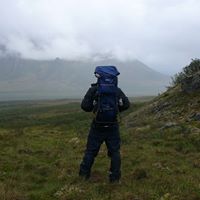
Christopher M Spence
view source
Christopher Spence
view source
Christopher Spence
view source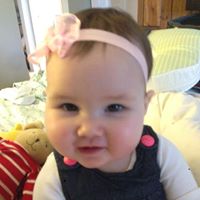
Christopher Spence
view source
Christopher A Spence
view source
Christopher Spence
view source
Christopher Spence
view source
Christopher Spence
view sourceGoogleplus
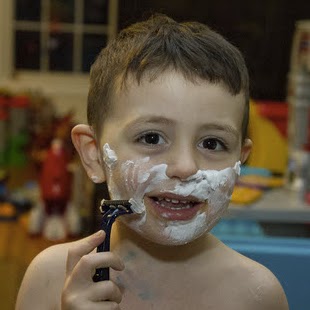
Christopher Spence
Work:
Lexan Systems LLC - Founder (2000)
Relationship:
Married
About:
"If determination, drive, and persistence were the sole qualities of success, toddlers would rule the world."
Tagline:
Technology Ninja, Wannabe Photographer and the happiest dad on the planet.

Christopher Spence
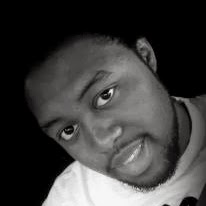
Christopher Spence

Christopher Spence

Christopher Spence

Christopher Spence
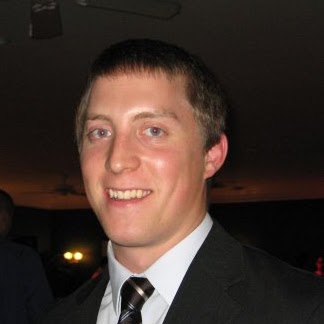
Christopher Spence

Christopher Spence
Get Report for Christopher M Spence from Hemet, CA, age ~42

















